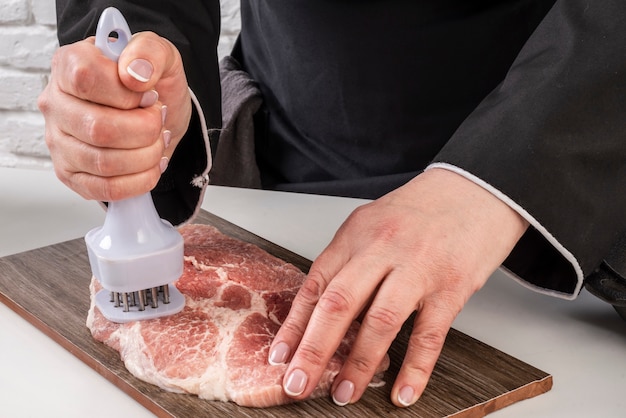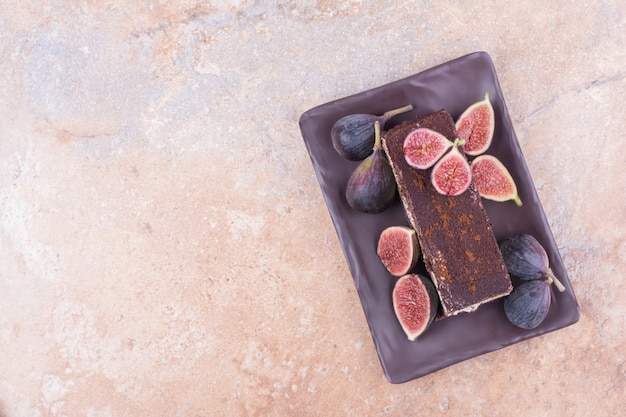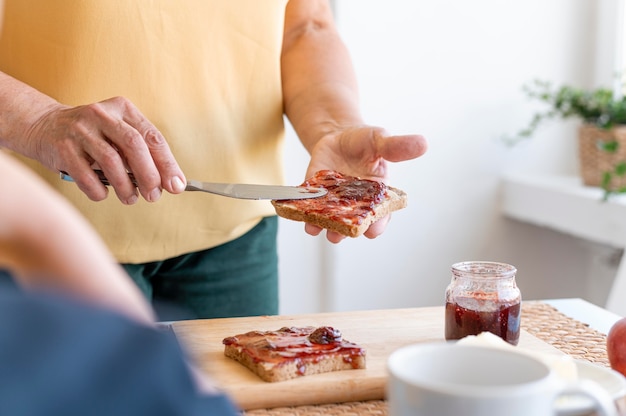Let's be honest, we've all been there. It's dinner time, you're famished, and the only thing in your fridge is a frozen steak. The idea of a juicy, perfectly cooked steak is tantalising, but the thought of thawing it out and then battling with the grill or pan makes you want to order a takeaway. But don't despair! Cooking a frozen steak doesn't have to be a culinary nightmare. With a few handy tips and a bit of patience, you can turn that frozen slab of meat into a delicious dinner that'll impress even the pickiest eaters.
Now, I'm not claiming to be a Michelin-starred chef. In fact, my culinary skills were once so abysmal that I once managed to burn toast. Yes, you read that right! Toast. But over time, I've learned a few things, and cooking a frozen steak is one of my newfound triumphs. So, join me as I share my journey to conquer the frozen steak, and hopefully, you'll discover that it's not as daunting as you think.
Part 1: The Great Thaw

The first step is to thaw out your frozen steak, and there are a few methods you can choose from. Each has its pros and cons, so choose the one that best suits your needs and time constraints.
1.1: The Dangers of the Microwave
Let's start with the obvious - don't even think about using the microwave. It's a tempting shortcut, but it will leave your steak unevenly thawed and probably more cooked on the outside than the inside. You'll end up with a tough, chewy, and frankly, disappointing steak. So, ditch the microwave and embrace a gentler approach.
1.2: The Refrigerator Method: Patience is a Virtue
This is the tried and tested method, and for good reason. It's slow and steady, which is exactly what your steak needs. Simply pop your frozen steak in the fridge the night before, and by morning, it will be nicely thawed and ready for its culinary debut. If you're short on time, try transferring it from the freezer to the fridge in the morning. It might not be fully thawed, but it'll be closer to the desired temperature.
The refrigerator method is ideal if you have the time. It ensures the steak thaws gradually and evenly, preventing the dreaded uneven cooking. It's also the gentlest method, preserving the steak's moisture and tenderness.
1.3: The Cold water bath: A Quicker Option
If you need a quicker thaw, a cold water bath can come to your rescue. Place your steak in a large bowl filled with cold water and change the water every 30 minutes. This method is faster than the fridge, but make sure you keep an eye on it as the steak will thaw more quickly. I usually aim for about 30 minutes, but always check the steak for doneness, you don't want it to get too close to room temperature.
The cold water bath is a great option for those who need to thaw their steak quickly. However, it's crucial to use cold water and change it regularly to prevent the steak from reaching an unsafe temperature. Additionally, be mindful of the time, as it can thaw much faster than in the refrigerator. A slightly frozen steak is easier to handle and cook than one that's completely thawed, so don't worry if it's not fully thawed before you start cooking.
Part 2: The Art of Seasoning

Once your steak is thawed, it's time to get creative with seasonings. A good seasoning can make all the difference in the flavour and overall appeal of your steak. Here are some tips to help you create a winning combination.
2.1: Simple is Best
Don't overcomplicate things with fancy spice blends. A good old-fashioned salt and pepper combo is all you really need. I like to use coarse sea salt for a more intense flavour, and freshly ground black pepper for a touch of heat. Just remember, a little goes a long way. You can always add more seasoning later, but you can't take it away.
The key to successful seasoning is to let the natural flavour of the steak shine through. Salt brings out the meat's natural flavour, and pepper adds a subtle spiciness that complements the savory notes. It's a classic combination that never fails to impress.
2.2: Adding Some Zing
If you want to experiment, try adding a little bit of paprika, garlic powder, or even a dash of onion powder to your seasoning mix. These additions can add a subtle complexity to your steak without overwhelming the flavour. Just remember to keep it simple and avoid using too many spices, as this can mask the natural flavour of the steak.
Experimenting with different seasonings can be a fun way to find your signature steak flavour. Paprika adds a smoky, earthy note, garlic powder brings a rich, pungent flavour, and onion powder provides a subtle sweetness. Use these spices sparingly to create a balanced and harmonious flavour profile.
2.3: Let the Seasoning Sink In
Once you've seasoned your steak, give it a good rub to ensure the seasoning is evenly distributed. Then, let it rest for at least 15 minutes at room temperature. This allows the seasoning to penetrate the meat and develop more intense flavours. The longer the steak rests, the more flavourful it will be.
Allowing the steak to rest before cooking is a simple but crucial step. It helps the seasoning to penetrate the meat, resulting in a more flavorful and tender steak. If you have time, you can even let the steak rest for 30 minutes, or even longer.
Part 3: Cooking Methods: Choosing Your Weapon

Now comes the fun part - choosing your cooking method. Each method offers a unique flavour and texture, so it's up to you to decide which best suits your preferences and kitchen equipment.
3.1: The Skillet Showdown
This is my go-to method, and it's surprisingly effective. Heat a heavy-bottomed skillet over medium-high heat. You'll know it's ready when a drop of water sizzles and evaporates instantly. Add a little oil to the pan and then sear the steak for about 3 minutes per side to create a beautiful crust. Once seared, reduce the heat to medium, cover the pan, and continue cooking until the steak reaches your desired doneness. This method ensures a juicy and tender steak with a delicious crust.
The skillet method is a great option for busy weeknights. It's fast, easy, and produces a delicious steak with a beautiful crust. The key is to use a heavy-bottomed skillet, which helps to distribute the heat evenly and prevents the steak from sticking to the pan.
3.2: The Oven's Embrace
This method is great for achieving an even level of doneness, especially for thicker cuts of meat. Preheat your oven to 400°F (200°C). Season your steak as usual and then place it on a baking sheet lined with parchment paper. For a crispier exterior, you can sear the steak in a skillet before placing it in the oven. Cook for 10-15 minutes, depending on the thickness of the steak and your desired level of doneness.
The oven method is ideal for those who prefer a hands-off approach. It provides an even level of doneness, ensuring that the steak is cooked perfectly throughout. You can also use this method to cook multiple steaks at once, making it perfect for large gatherings.
3.3: The Grill's Majesty
For that smoky flavour, the grill is hard to beat. Preheat your grill to medium-high heat. Make sure the grill grates are clean and well-oiled to prevent the steak from sticking. Sear the steak for 3-5 minutes per side, then reduce the heat to medium and continue cooking until the steak reaches your desired doneness. Remember to flip the steak only once, and don't press down on it with a spatula. This will result in a juicy, flavorful steak.
Grilling is perfect for those who enjoy the smoky flavour and char marks that grilling provides. It's a great way to cook steaks in the warmer months, and the char adds a unique flavour to the meat. However, it's essential to have a clean grill and use a good quality grill to ensure the steak cooks evenly without sticking.
Part 4: The Doneness Dilemma
Now comes the crucial part - determining the level of doneness you prefer. There are different ways to achieve your desired level of doneness, and it's important to understand the science behind it.
4.1: The Importance of internal temperature
Here's where things get a little more technical, but don't worry, it's not as complicated as it sounds. The key to achieving the perfect level of doneness is to check the internal temperature of the steak. You can do this with a digital meat thermometer, which is a must-have for any home cook. Here's a handy chart to guide you:
| Doneness | Internal Temperature (°F) | Internal Temperature (°C) |
|---|---|---|
| Rare | 125-130 | 52-54 |
| Medium-Rare | 130-135 | 54-57 |
| Medium | 140-145 | 60-63 |
| Medium-Well | 150-155 | 65-68 |
| Well-Done | 160 | 71 |
A meat thermometer is the most accurate way to determine the steak's doneness. It removes the guesswork and ensures that your steak is cooked to your liking. Different people have different preferences when it comes to doneness, so it's essential to understand the internal temperature ranges for each level.
4.2: The Touch Test: A Rough Guide
If you don't have a meat thermometer, you can try the touch test. This is a less accurate method, but it can give you a general idea of the steak's doneness. Simply press the centre of the steak with your finger. If it feels soft and springy, it's rare. If it feels firmer, it's medium-rare. And if it feels very firm, it's medium or well-done. This method is not perfect, but it's a handy tool to have in your culinary arsenal.
The touch test is a good alternative if you don't have a meat thermometer, but it's not as accurate as using a thermometer. It's important to practice this technique to get a feel for the different levels of doneness. If you're unsure, it's always better to err on the side of caution and cook the steak a little longer.
Part 5: Resting is Essential
Once your steak is cooked to your liking, don't be tempted to dive in straight away. It needs to rest for 5-10 minutes before you slice it. This allows the juices to redistribute throughout the steak, resulting in a more tender and flavourful final product. Cover the steak loosely with foil while it rests to prevent it from drying out.
Resting is a critical step in the cooking process, often overlooked. It allows the juices to redistribute evenly throughout the steak, creating a more tender and flavorful steak. It also prevents the juices from running out when you cut into the steak.
Part 6: The Finishing Touches
A good steak deserves a good sauce, and a simple pan sauce is a great way to elevate your meal. Once you've removed the steak from the skillet, add a knob of butter and a splash of your favourite wine or stock to the pan. Scrape up the browned bits from the bottom of the pan, bring the sauce to a simmer, and let it thicken slightly. You can also add a pinch of herbs or a squeeze of lemon for added flavour.
Pan sauces are a simple and delicious way to add flavour and richness to your steak. The browned bits from the bottom of the pan, known as fond, add a depth of flavour that you won't find anywhere else. Use your favorite wine or stock to create a flavorful and aromatic sauce that complements your steak perfectly.
Part 7: Serving Suggestions
A perfect steak deserves a perfect accompaniment. Some of my favourite sides include:
- mashed potatoes: Creamy and comforting.
- Roasted vegetables: A healthy and flavorful option.
- Asparagus: A classic pairing for steak.
- A green salad: Fresh and light.
- Garlic bread: For those who love a carb-heavy side.
Choosing the right sides can elevate your steak dinner to a whole new level. Mashed potatoes offer a creamy and comforting counterpoint to the savory steak, while roasted vegetables add a burst of flavor and color. Asparagus is a classic pairing that complements the steak's richness, and a green salad provides a refreshing contrast. For those who love carbs, garlic bread is a delicious and satisfying option.
Part 8: FAQs
8.1: Can I freeze a thawed steak again?
It's not recommended. While you can technically refreeze a steak, the quality will be compromised. The repeated freezing and thawing process will affect the texture and flavour, making it tougher and less juicy. It's best to avoid refreezing a thawed steak to preserve its quality and flavour.
8.2: How do I know if my steak is safe to eat?
The USDA recommends cooking steaks to an internal temperature of 145°F (63°C). This ensures that any harmful bacteria are killed. Always use a meat thermometer to check the internal temperature of your steak to ensure it is cooked to a safe temperature.
8.3: How long can I store a cooked steak in the fridge?
A cooked steak can be stored in the fridge for up to 3-4 days. Make sure to store it in an airtight container to prevent it from drying out. Refrigerate cooked steaks properly to ensure they remain safe and flavorful.
8.4: What's the best way to reheat a cooked steak?
Reheat your steak in a low oven or in a skillet over medium heat. Avoid using the microwave as it can make the steak tough and dry. Reheating in the oven or a skillet helps to maintain the steak's moisture and texture.
8.5: What type of steak is best for cooking from frozen?
Any type of steak can be cooked from frozen, but thinner cuts like sirloin or ribeye will cook more quickly and evenly. Thinner cuts cook faster and more evenly than thicker cuts, making them a better choice for cooking from frozen. However, if you prefer a thicker steak, you can always adjust the cooking time accordingly.
Conclusion: Embrace the Frozen Steak Challenge
So there you have it. You now have all the knowledge you need to transform a frozen steak into a culinary triumph. Remember, it's not about being a master chef, it's about embracing the process, experimenting with flavours, and enjoying the satisfaction of creating a delicious meal from something seemingly ordinary. Next time you're faced with a frozen steak, don't panic. Remember the tips in this guide, and you'll be serving up a perfect steak in no time. Happy cooking!
Everyone is watching

Prime Rib Roast Cooking Time Chart: Per Pound Guide
Cooking TipsPrime rib roast. Just the name conjures images of lavish dinners, crackling fires, and hearty laughter. It’s ...

How Long to Bake Potatoes in the Oven (Perfect Every Time)
Cooking TipsBaked potatoes are a staple in my kitchen. They're incredibly versatile, delicious, and surprisingly easy to m...

Perfect Rice Every Time: The Ultimate Guide to Cooking Rice
Cooking TipsAs a self-proclaimed foodie, I've always been a bit obsessed with rice. It's the foundation of countless cuisi...

The Ultimate Guide to Cooking Asparagus: Tips, Techniques, and Recipes
Cooking TipsAsparagus. The mere mention of this spring delicacy conjures up images of vibrant green spears, crisp and burs...

Ultimate Guide to Cooking the Perfect Thanksgiving Turkey
Cooking TipsThanksgiving. Just the word conjures up images of overflowing tables laden with delicious food, the scent of r...
